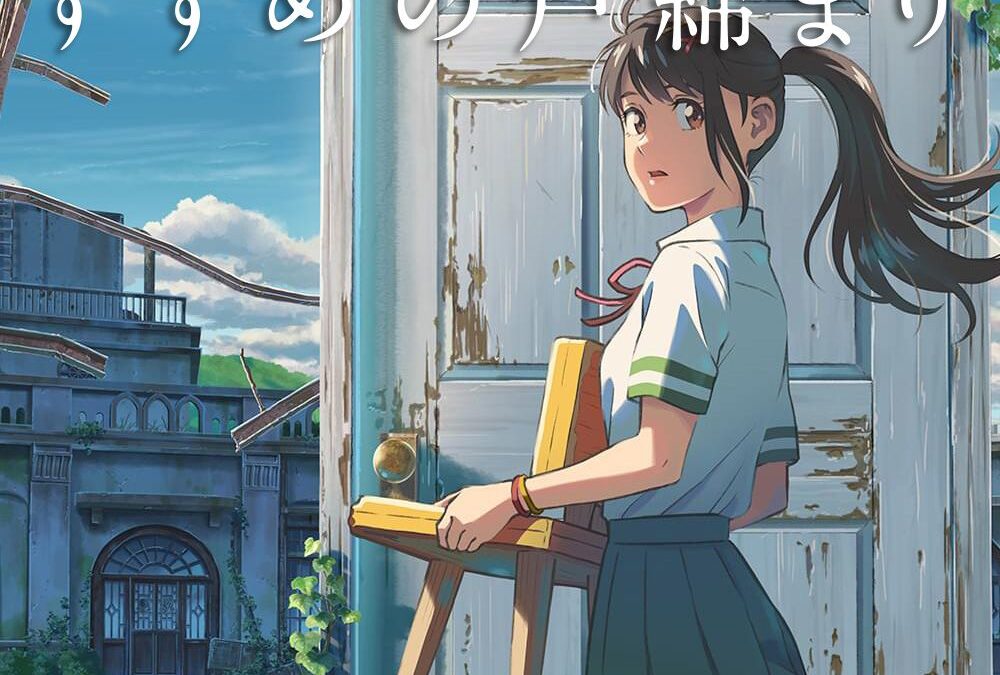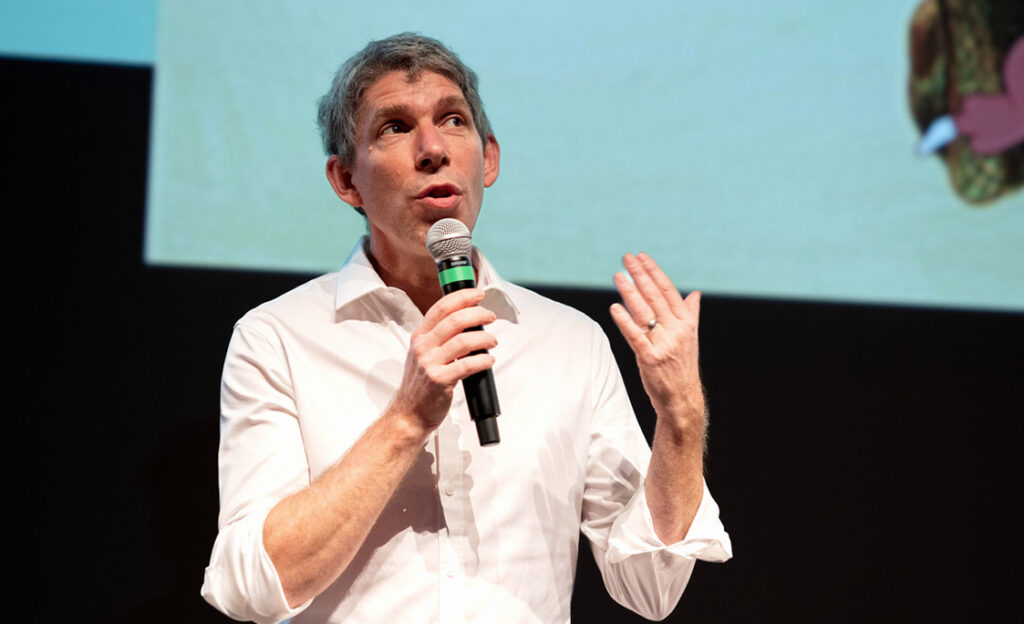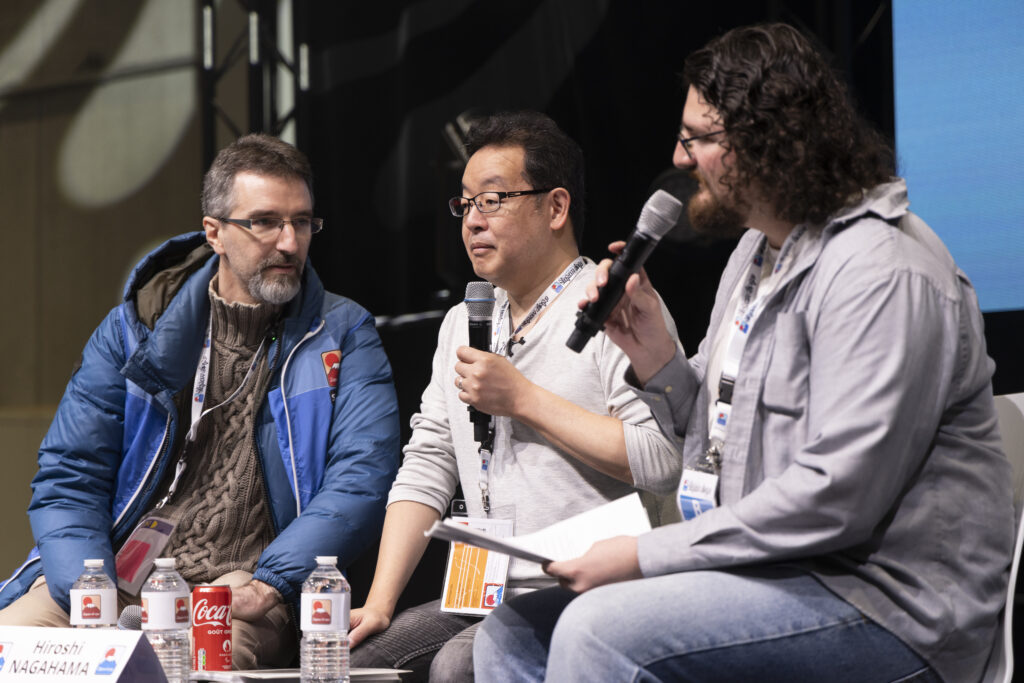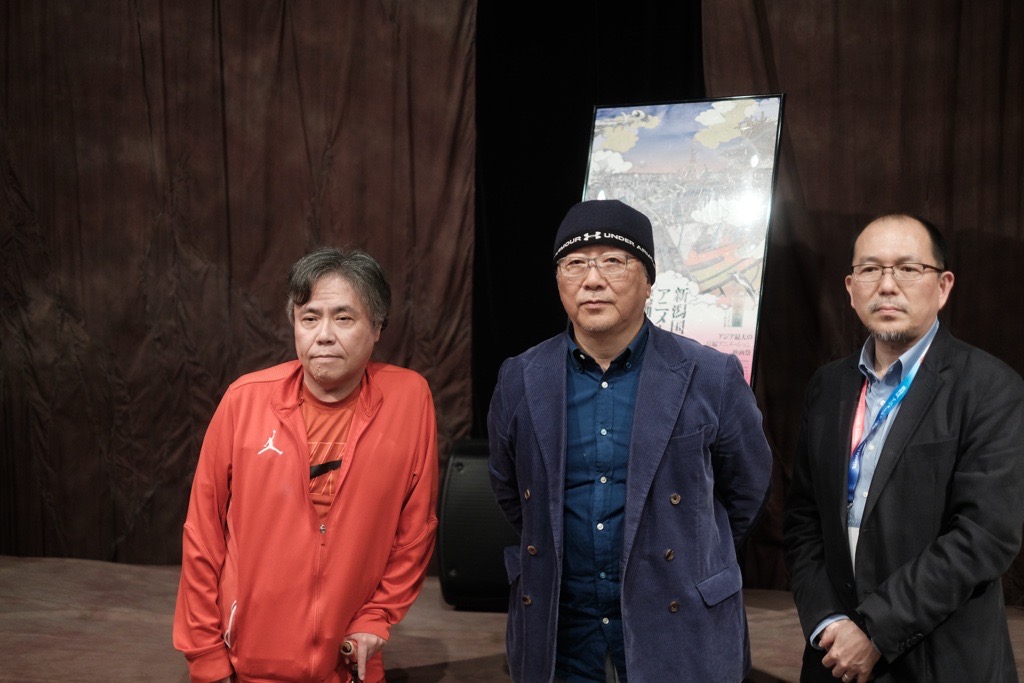Saying that Makoto Shinkai is one of the most prominent Japanese directors of the last decade would be stating the obvious. Since the worldwide success of Your Name in 2016, everybody inside and outside of anime fandom, regardless of their opinions on the director, has been closely following his career and works. With his latest film Suzume no Tojimari, breaking 1 million entries in its first three days and being the best start a Shinkai movie has known so far, it seems like success is still on the agenda. Today, then, Shinkai is not just a household name in Japanese animation or cinema as a whole – he has become something of a national icon. But the question I’d like to ask here, and which is in my opinion of prime importance to understand Suzume no Tojimari, is: what “nation”? What does that mean for Shinkai to be a “national director”?
Like our content? Feel free to support us on Ko-Fi!
Before anything, it feels important to acknowledge that Suzume no Tojimari’s premise is completely ridiculous. A high-school student and a mysterious man turned into a walking and talking chair chase a cat, which feels like an even more vicious version of Madoka Magica’s Kyubey, all across Japan. The film plays it straight, but never too much, as it naturally integrates comedy moments, helping the viewer acknowledge how over-the-top it all is. Suzume no Tojimari’s comedy feels far more natural than Your Name’s old gags about body/gender swapping. Shinkai’s awareness of youth culture and contemporary lifestyles (here, social media) remains one of the distinctive elements of his style and always supports the narration and atmosphere in remarkable ways.
In that and many aspects, Suzume no Tojimari remains a very recognizable Shinkai film. The baseline standard for the animation is, as always, solid, with some incredible highs in terms of character acting; the direction and camerawork are ambitious, perfectly served by 3D backgrounds and expert digital compositing and lighting – though the movie can’t avoid awful CG crowds in some moments. We have become used to all this, but it feels like these elements belong in Suzume no Tojimari for something other than pure spectacle: they match its greater proportions and epic scale.
Indeed, the film initially starts as a road movie with fantastic elements but then moves on to a more intimate drama in its second half and ends as a full-on fantasy film. This description probably makes it sound like the structure is loose, like Weathering with You’s stretched-out, repetitive climaxes. This is perhaps how it will feel for some viewers. But, from another perspective, I would say that it illustrates how Shinkai has finally managed to escape the risk of making yet another repetition of Your Name. Suzume no Tojimari nails down both its dramatic and epic sides to a degree none of the director’s previous films had managed to. In other words, it feels like a new step for Shinkai, who is now confident enough to try out new things. To take a trivial example, there is no Radwimps insert song played over Tokyo landscapes, which started to become one of Shinkai’s gimmicks. Instead, the rock band’s song is used as an ending theme, leaving all the room it needs for the orchestral soundtrack in the impactful moments. More fundamentally, nowhere is this more visible than in the romance and youth movie aspects of Suzume, which are almost systematically toned down: the film is less about Suzume and Sôta’s love story than it is about the people they live with and encounter along the way.
This is where the encounter between Shinkai and the “nation” plays out. The director’s affection for Tokyo is no secret by this point, and the capital of Japan also features prominently in Suzume no Tojimari. But the movie is not about Tokyo: it is about Japan as a whole – in its geographical, human, and cultural dimensions. Suzume’s trip takes her from the south of Japan, in Kyûshû, to the north in Fukushima, through Shikoku, Kobe, and Tokyo – in other words, she makes a tour of most of the main Japanese archipelago, taking the time to explore the places and meet the people living there. The superb art direction plays a major part in making the viewer feel the diversity and beauty of Japan – although it has the usual downside of sometimes feeling like it’s an ad for a tourism agency. There is an unquestionably commercial nature to Suzume no Tojimari (if you don’t feel like going to a Lawson convenience store, eating at Mac Donald’s, or downloading LINE when leaving the theater, the movie is a complete failure), but it never comes at the cost of its emotional core: Shinkai knows how to make an entertainment blockbuster and balance both aspects.
At its core, then, Suzume no Tojimari is about places and the memories they leave. All of the climactic moments take place in ruins – abandoned bath complexes, schools, or amusement parks – and each resolution of these climaxes involves a rediscovery and embrace of the former lives of these places: who lived there, who used them, what they felt and did. Therefore, not only is Suzume no Tojimari’s geographical dimension far more ambitious than that of Shinkai’s previous films but it is also accompanied by a historical one, which acknowledges that places are not just points on a map or where people live – they are experiences, filtered through time and people’s memories.
This is where, of course, the idea of trauma comes in. Suzume no Tojimari’s references to the 2011 Tôhoku earthquake are no longer the indirect (but obvious) metaphor of Your Name: the film’s last act happens in the Tôhoku region, visual cues are impossible to miss, and the March 11th date is explicitly mentioned. I distinctly remember that many people (me included) feared that Suzume no Tojimari would be Shinkai’s “corona film”, applying the same treatment to the pandemic that it did to the earthquake and tsunami in Your Name or to global warming in Weathering with You. In interviews, Shinkai himself admitted that there’s some of that (notably in Sôta’s characterization), but also something else – Suzume no Tojimari’s more direct depiction of the Tôhoku earthquake is something that neither he nor his audience would have been ready for at the time of Your Name. However, even as the movie feels more specific in its representation, it is broader in its message.
First, while Suzume no Tojimari generically feels more like a fantasy film, its depiction of natural disasters is far more grounded and realistic – to the point that Japanese viewers are warned that realistic earthquake alerts happen throughout the movie before they enter the theater. It, therefore, hits much closer to home, not just in its depiction of places but also of how people live their daily lives and react to exceptional – or not-so-exceptional, as the movie reminds us earthquakes are – events.
On the other hand, Suzume no Tojimari is not just a realistic disaster film: it is also fantasy. Said fantasy is, as always, deeply rooted in concepts typically associated with Japanese culture, folklore, and religion: doors and thresholds, local gods and divinities of various shapes, human and non-human. But there as well, there is a subtlety that was lacking in Shinkai’s latest films and is more reminiscent of his earlier works: while they feel typically Japanese, none of these elements point to any obvious practice or belief, and Suzume no Tojimari doesn’t fall in the same basic (but powerful) oppositions Your Name did – tradition and modernity, the country and the big city.
If Suzume no Tojimari feels like such a deeply national film, it is partly thanks to that subtlety. It undoubtedly remains mainstream and is anything but countercultural – but it, and Shinkai, never forget their subcultural origins. Many viewers have already compared Suzume no Tojimari to one of Shinkai’s earlier and lesser-known works, The Children Who Chase Lost Voices – which feels fair as it is directly referenced. The fetishism is obvious (as Suzume sits or steps on Sôta, turned into a chair) but always mediated through comedy and never fan-servicey; the soundtrack contains references to Galaxy Express 999, the obscure 80’s anime movie Penguin’s Memory, and possibly Kare Kano, but that is alongside a lineup of Japan’s most iconic pop songs, from Nakajima Miyuki’s Ito to Yumi Arai’s Rouge no Dengon; the movie features possible visual nods to Lupin III, Uzumaki, Patlabor, Madoka Magica, and Howl’s Moving Castle, but they never feel obnoxious. In other words, while it tries to tie together all these elements into a broader “Japanese” label, Suzume no Tojimari manages to navigate multiple dimensions, from the mainstream to the subcultural and from the contemporary to the nostalgic.
One of the criticisms most often addressed at Shinkai is the immaturity of his works, which had seemingly reached a peak with Weathering with You and its ending, which many felt to be an irresponsible response to global warming. In contrast, Suzume no Tojimari feels like the work of a mature director – and Shinkai seems to confirm that in the multiple interviews he has been giving recently. Aware of the negative responses to Weathering with You and wanting to improve on Your Name without merely repeating it, he sought to broaden his audience even more and tackle dramatic issues more directly. And, for him, there seems to be just one way to accomplish this: that is to search for what constitutes “Japan”, uncover its traumas, and resolve them. Because of that, it initially feels like Suzume is too preoccupied with Japanese-ness to truly reach global audiences – but this is certainly how the first viewers of Your Name and Weathering with You must have felt. In other words, only time will tell whether Shinkai’s new attempt at nation-building will also succeed in strengthening its creator’s status as a global icon.
Like our content? Feel free to support us on Ko-Fi!
You might also be interested in
Benoît Chieux, a career in French animation [Carrefour du Cinéma d’Animation 2023]
Aside from the world-famous Annecy Festival, many smaller animation-related events take place in France over the years. One of the most interesting ones is the Carrefour du Cinéma d’Animation (Crossroads of Animation Film), held in Paris in late November. In 2023,...
Directing Mushishi and other spiraling stories – Hiroshi Nagahama and Uki Satake [Panels at Japan Expo Orléans 2023]
Last October, director Hiroshi Nagahama (Mushishi, The Reflection) and voice actress Uki Satake (QT in Space Dandy) were invited to Japan Expo Orléans, an event of a much smaller scale than the main event they organized in Paris. I was offered to host two of his...
Akira stories – Katsuhiro Otomo and Hiroyuki Kitakubo talk at Niigata International Animation Film Festival 2023
Among the many events taking place during the first Niigata International Animation Film Festival was a Katsuhiro Otomo retrospective, held to celebrate the 45th anniversary of Akira and to accompany the release of Otomo’s Complete Works. All of Otomo’s animated...





Recent Comments